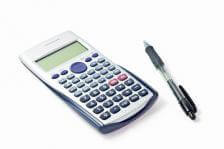How to Work and Play with PEMDAS
Learn a mnemonic that will help you remember the rules of PEMDAS and learn to play a fun game that’s based upon the order of operations defined by PEMDAS.
Jason Marshall, PhD
Listen
How to Work and Play with PEMDAS
Now that we’ve learned what all of the letters in the acronym PEMDAS stand for and what they tell you about the order of operations in arithmetic and algebra (check out the 
Uh, what’s that…did I say fun? Yep, I sure did. Because believe it or not, there’s a very cool game that you can play that’s based upon the order of operations that are defined by PEMDAS. So let’s get to it!.
Recap: What is the Order of Operations?
As we learned last time, the order of operations in arithmetic and algebra is used to figure out which part of a problem to solve first. As we also learned, it’s absolutely crucial that you adhere to the order of operations set by PEMDAS—otherwise you might get the wrong answer for a problem like 2 + 8 / 2 where the order in which the operations are performed is ambiguous. In other words, in this case do we do the addition or the division first?
The good news is that PEMDAS answers this question for us (do the division first), and it’s also easy to use…if you know what all the letters stand for! All you need to remember is that PEMDAS stands for: parenthesis, exponentiation, multiplication and division, addition and subtraction. If you follow that order of operations, you should get the right answer. But the bad news is that when you’re just getting started, simply remembering the acronym PEMDAS can be kind of hard. So what can you do?
How to Remember PEMDAS
Fortunately, one of the great things about acronyms is that we can make up mnemonics that help us remember them. Many moons ago (forthcoming pun intended), I memorized the ordering of the planets from the Sun—Mercury, Venus, Earth, Mars, etc.—using the mnemonic “My Very Excellent Mother Just Sat Under New Pines.” Admittedly, this is kind of a silly and nonsensical sentence, but that obviously didn’t matter since I still remember it.
Over the years people have also come up with mnemonics to make it easier to remember PEMDAS. The most famous of these (at least if you’re from the United States) is: “Please Excuse My Dear Aunt Sally.” While a mnemonic like this is certainly helpful when you’re starting out, the truth is that once you get used to doing arithmetic using the order of operations defined by PEMDAS, it’ll all become second nature and you’ll get problems right without even thinking about it. But in the meantime, it’s great to have a caring person like “My Dear Aunt Sally” to help out!
PEMDAS, BEDMAS, BODMAS, and More!
I should point out that if you’re not from the United States, you might be thinking that all of the acronyms and mnemonics I’ve mentioned sound crazy. It turns out that there are some significant differences in how PEMDAS is described around the world. In all cases though, the underlying mathematical meaning is exactly the same (math is the universal language after all), but the words to describe it change.
For example, in Canada, the UK, and lots of other places around the world, parenthesis are called “brackets” when used in math. Which means that PEMDAS becomes BEMDAS. In the UK, the “E” for “exponentiation” is usually exchanged for an “O” meaning “orders,” which means that once we switch “P” with “B” and “E” with “O,” PEMDAS becomes BOMDAS. Or more commonly, after switching the “M” and “D” around (which we’re free to do since multiplication and division have the same precedence), PEMDAS becomes BODMAS. As you can see, there are lots and lots of variations on the theme, but you don’t need to worry about remembering them all. Just pick one, find a mnemonic for it that you like, commit it to memory, and go on with your merry mathematical life.
Why PEMDAS?
Just in case you’re wondering why “PEMDAS” is “PEMDAS” and not, say, something like “PEASMD” instead (with the precedence of multiplication and division swapped with that of addition and subtraction), the answer is that it’s really just because a long time ago some people defined arithmetic to work that way. In other words, the order of operations is just a convention and like all conventions in math, there’s no reason that it must be that way…it just is. And, since it’s been working so well for so long, it’s what we all use!
It’s Time to Play “Four Fours”
Now that we’ve got all this important stuff about using the order of operations out of the way, it’s time for us to have some fun with it by playing a game called “four fours.” The game is very simple: the objective is to use four copies of the number 4, any combination of three of the four basic arithmetic operations (addition, subtraction, multiplication, and division…the same one can be used more than once), and as many pairs of parentheses as you need, to write an expression that’s equal to one of the numbers from 0 to 9. For example, here’s how it works for the numbers 0, 1, 2, and 5. Can you figure out how to get the other numbers?
-
0 = 4 – 4 + 4 – 4 (No parenthesis needed.)
-
1 = 4 – 4 + 4 / 4 (Again, no parenthesis needed.)
-
2 = 4 / 4 + 4 / 4 (Notice the importance of PEMDAS here!)
-
3 =
-
4 =
-
5 = (4 x 4 + 4) / 4 (Notice the importance of parenthesis here!)
-
6 =
-
7 =
-
8 =
-
9 =
Wrap Up
Okay, that’s all the math we have time for today. Remember to become a fan of the Math Dude on Facebook where you’ll find a new featured number or math puzzle posted every weekday. And if you’re on Twitter, please follow me there too. Finally, if you have math questions, feel free to send them my way via Facebook, Twitter, or by email at mathdude@quickanddirtytips.com.
Until next time, this is Jason Marshall with The Math Dude’s Quick and Dirty Tips to Make Math Easier. Thanks for reading, math fans!

